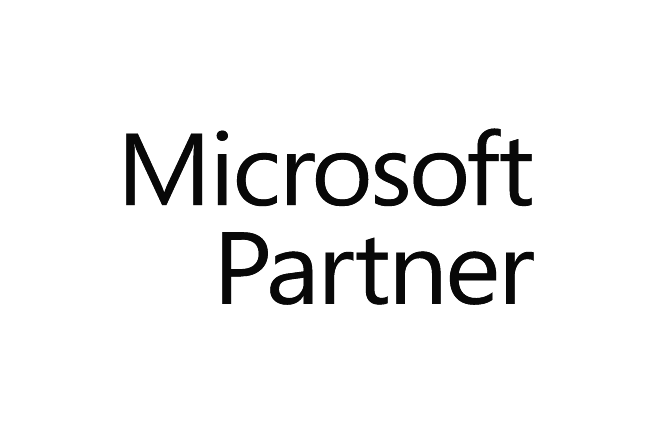
Microsoft Official Course (MOC)
Course
AZ-700T00: Designing and Implementing Microsoft Azure Networking Solutions
(3 days)
About this Course:
Course Goals/Skills Gained:
- Design, implement and manage hybrid network connections
- Design and implement core Azure networking infrastructure
- Design and implement routing and load balancing in Azure
- Secure and monitor networks
- Design and implement private access to Azure Services
Course Format:
[table id=1 /]
Course Language Option
[table id=2 /]
- You can choose the language in which the training will be conducted – Bulgarian or English.
- All our instructors are fluent in English.
Student Guides:
- The training materials are available in electronic format.
- They can be used online / offline on any device. Lifetime access.
Lab Environment:
- Each student has his own lab environment, where the exercises take place, part of the course.
- You do not need to install software on a computer or special hardware requirements. Participants in a face-to-face format in our
- Training Center have an individual computer during the training.
At Course Completion:
[table id=3 /]
- Lifetime access to a video archive with recording of each individual lecture.
- Official internationally recognized certificate for completed training course.
Course Duration:
- 3 working days (09:00 – 17:00)
- or 24 uch.ch. training (theory and practice) in overtime with a duration of 3 weeks
- Saturday and Sunday 10:00 – 14:00, 14:00 – 18:00, 18:00 – 22:00
- Monday and Wednesday 19:00 – 23:00
- Tuesday and Thursday 19:00 – 23:00
Payment
- An application for an invoice is accepted at the time of enrollment in the respective course. An invoice is issued within 7 days of confirming the payment.
Upcoming Courses
[tribe_events_list category=”azure”]
- For more information, use the contact form. We will contact you to confirm the dates.
Curriculum
- 8 Sections
- 53 Lessons
- Lifetime
- Module 1: Introduction to Azure Virtual NetworksIn this module you will learn how to design and implement fundamental Azure Networking resources such as virtual networks, public and private IPs, DNS, virtual network peering, routing, and Azure Virtual NAT.9
- 2.1Explore Azure Virtual Networks
- 2.2Configure public IP services
- 2.3Design name resolution for your Virtual Network
- 2.4Enable Cross-VNet connectivity with peering
- 2.5Implement virtual network traffic routing
- 2.6Configure internet access with Azure Virtual NAT
- 2.7Lab : Exercise: design and implement a Virtual Network in Azure
- 2.8Lab : Exercise: configure DNS settings in Azure
- 2.9Lab : Exercise: connect two Azure Virtual Networks using global virtual network peering
- Module 2: Design and Implement Hybrid NetworkingIn this module you will learn how to design and implement hybrid networking solutions such as Site-to-Site VPN connections, Point-to-Site VPN connections, Azure Virtual WAN and Virtual WAN hubs.7
- 3.1Design and implement Azure VPN Gateway
- 3.2Connect networks with Site-to-site VPN connections
- 3.3Connect devices to networks with Point-to-site VPN connections
- 3.4Connect remote resources by using Azure Virtual WANs
- 3.5Create a network virtual appliance (NVA) in a virtual hub
- 3.6Lab : Exercise: create a Virtual WAN by using Azure Portal
- 3.7Lab : Exercise: create and configure a virtual network gateway
- Module 3: Design and implement Azure ExpressRouteIn this module you will learn how to design and implement Azure ExpressRoute, ExpressRoute Global Reach, ExpressRoute FastPath and ExpressRoute Peering options.9
- 4.1Explore Azure ExpressRoute
- 4.2Design an ExpressRoute deployment
- 4.3Configure peering for an ExpressRoute deployment
- 4.4Connect an ExpressRoute circuit to a VNet
- 4.5Connect geographically dispersed networks with ExpressRoute global reach
- 4.6Improve data path performance between networks with ExpressRoute FastPath
- 4.7Troubleshoot ExpressRoute connection issues
- 4.8Lab : Exercise: configure an ExpressRoute gateway
- 4.8Lab : Exercise: provision an ExpressRoute circuit
- Module 4: load balancing non-HTTP(S) traffic in AzureIn this module you will learn how to design and implement load balancing solutions for non-HTTP(S) traffic in Azure with Azure Load balancer and Traffic Manager.5
- Module 5: Load balancing HTTP(S) traffic in AzureIn this module you will learn how to design and implement load balancing solutions for HTTP(S) traffic in Azure with Azure Application gateway and Azure Front Door.5
- Module 6: Design and implement network securityIn this module you will learn to design and imponent network security solutions such as Azure DDoS, Azure Firewalls, Network Security Groups, and Web Application Firewall.9
- 7.1Secure your virtual networks in the Azure portal
- 7.2Deploy Azure DDoS Protection by using the Azure portal
- 7.3Deploy Network Security Groups by using the Azure portal
- 7.4Design and implement Azure Firewall
- 7.5Working with Azure Firewall Manager
- 7.6Implement a Web Application Firewall on Azure Front Door
- 7.7Lab : Exercise: deploy and configure Azure Firewall using the Azure portal
- 7.8Lab : Exercise: secure your virtual hub using Azure Firewall Manager
- 7.9Lab : Exercise: configure DDoS Protection on a virtual network using the Azure portal
- Module 7: Design and implement private access to Azure ServicesIn this module you will learn to design and implement private access to Azure Services with Azure Private Link, and virtual network service endpoints.6
- 8.1Define Private Link Service and private endpoint
- 8.2Explain virtual network service endpoints
- 8.3Integrate Private Link with DNS
- 8.4Integrate your App Service with Azure virtual networks
- 8.5Lab : Exercise: create an Azure private endpoint using Azure PowerShell
- 8.6Lab : Exercise: restrict network access to PaaS resources with virtual network service endpoints
- Module 8: Design and implement network monitoringIn this module you will learn to design and implement network monitoring solutions such as Azure Monitor and Network watcher.3
Instructors
FAQs
Requirements
- Understanding of on-premises virtualization technologies, including: VMs, virtual networking, and virtual hard disks.
- Understanding of network configurations, including TCP/IP, Domain Name System (DNS), virtual private networks (VPNs), firewalls, and encryption technologies.
- Understanding of software defined networking.
- Understanding hybrid network connectivity methods, such as VPN.
- Understanding resilience and disaster recovery, including high availability and restore operations.
Features
- Design, implement and manage hybrid network connections
- Design and implement private access to Azure Services
- Design and implement routing and load balancing in Azure Secure and monitor networks
- Design and implement core Azure networking infrastructure
Target audiences
- This course is for Network Engineers looking to specialize in Azure networking solutions. An Azure Network engineer designs and implements core Azure networking infrastructure, hybrid networking connections, load balance traffic, network routing, private access to Azure services, network security and monitoring. The azure network engineer will manage networking solutions for optimal performance, resiliency, scale, and security.






